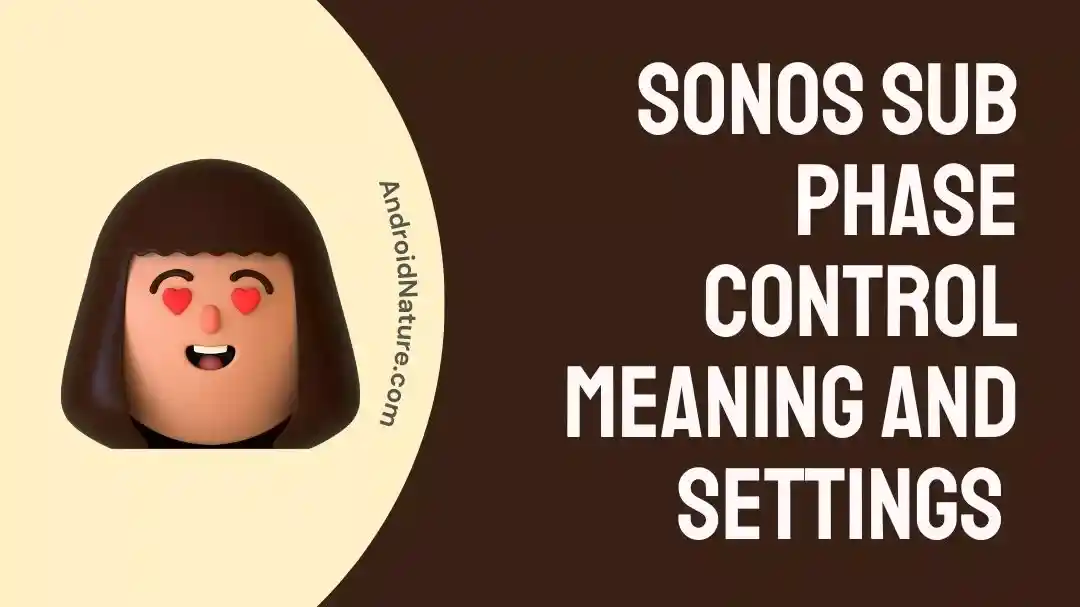Are you into a deep, immersive sound experience? If so, you’ve probably heard of Sonos Sub and its revolutionary phase control technology.
This groundbreaking feature allows you to fine-tune your sound and bring your audio to life.
So, what does phase control mean on Sonos Sub, and how can it benefit your listening experience?
This article will dive deeply into this technology and learn all about it.
What does phase control mean on Sonos sub?
Short answer: Phase control on a Sonos Sub refers to the ability to adjust the timing of the Subwoofer’s audio output relative to the other speakers in the system. This can be used to minimize distortion and improve overall sound quality.
Sonos is a leading home audio system manufacturer known for its quality products and advanced features. However, one feature that has made Sonos stand out from other audio systems is its phase control technology. This technology allows users to adjust the timing of the audio signal to ensure the best sound possible.
Phase control is the process of adjusting the timing of the audio signal that is sent to the speakers. This is done to achieve the best sound possible.
The timing is adjusted so that the sounds from the left and right speakers reach the listener’s ears simultaneously.
This creates a 3D soundscape that is more realistic and immersive.
Phase control is a powerful technology that can enhance the sound of any audio system.
It is an essential feature of Sonos products and is why they are so popular. With phase control, Sonos products can create an incredibly realistic and immersive sound.
What does phase control do on the Sonos sub?
By changing the phase control, you can ensure that the bass from the Sub is in sync with the rest of the sound system, resulting in a more accurate and complete range of sound.
To adjust the phase control, you need to use the Sonos app.
- Step 1: Open the app.
- Step 2: Go to the Settings.
- Step 3: Use the slider to adjust the phase control.
- Step 4: When changing the phase control, you can choose between two settings: 0° and 180°.
When adjusting the phase control, listening to the results is essential to ensure that the bass is in sync with the rest of the system.
If the bass sounds too loud or out of sync, you may need to adjust the phase control. The most important thing to remember is to experiment with the phase control until you find the best setting for your system.
Phase control is an essential feature on the Sonos Sub, as it helps to ensure that your home audio system sounds its best.
By adjusting the phase control, you can ensure that the bass from your Sonos Sub is in sync with the rest of your system, resulting in a more accurate and complete range of sound.
Sonos sub-phase control 0 or 180
The Sonos Sub Phase Control has two settings: 0 or 180.
The 0 setting is the standard and is the one most users will be familiar with. This setting ensures the Sonos Subwoofer is in phase with the rest of your speakers, resulting in a balanced and consistent sound throughout the entire system.
The 180 setting is an advanced one that can further customize your sound. This setting flips the phase of the Sonos Subwoofer, which can result in a fuller bass and improved stereo imaging. In addition, the 180 setting is ideal for larger rooms where the speakers may not be perfectly aligned.
The Sonos Sub Phase Control is an easy way to customize your Sonos sound system for optimal performance. Whether you’re a novice or an experienced audio enthusiast, the Sonos Sub Phase Control will help you get the most out of your Sonos system.
Sonos sub-phase settings
The Sonos Sub is an advanced piece of sound engineering designed to deliver an unparalleled listening experience. It features two force-cancelling speakers, a powerful amplifier and an advanced digital signal processor.
However, the real power of the Sonos Sub lies in its ability to be customized to deliver the perfect audio experience for any setup.
One of how the Sonos Sub can be customized is through its phase settings. The phase setting determines how the Sub interacts with the other speakers in a system.
For example, it can be adjusted to create a balanced sound or to emphasize some aspects of the mix.
For most listening environments, the default setting of 0 degrees is recommended. This setting will keep the sound balanced and ensure that both the Sub and the other speakers in the system are working together in harmony.
However, adjusting the phase setting can provide a better listening experience in some instances.
- If you have a setup with two speakers on either side of the Sub, setting the phase to 90 degrees can help to make the sound stage feel more cohesive. This can be especially helpful when listening to music with panning effects.
- If you have a setup with two speakers in the same room, setting the phase to 180 degrees can help to create a more enveloping sound. This will make the sound stage feel more spacious and natural.
Finally, if you’re looking for a more dramatic effect, setting the phase to 270 degrees can make the sound appear to come from behind the listener. Again, this can create a unique and immersive listening experience.
SEE ALSO:
13 Fixes : Sonos Speakers Not Showing Up On Airplay
[9 Fixes] : Sonos Apple Music Not Working
Fix: Unable To Join The Sonos Network
Final Words
In conclusion, phase control on a Sonos sub means that you can adjust the timing of the Subwoofer’s signal to the signal of your other speakers.
This helps to create a smoother and more balanced sound and ensures that the Subwoofer accurately reproduces the bass notes from your music. Phase control is essential to getting the best sound from your Sonos sub and is a great way to tailor your system to your preferences.

A content writer with a B.Tech degree from Kalinga University, Saksham Jamwal, has a passion for writing. His favorite genre to write about is the ‘daily use devices’ and ‘social media’. He has worked on multiple projects ranging from blog posts to product reviews and loves to connect with people through his writing. Saksham is a creative and motivated individual who strives to produce informative and relatable content.










